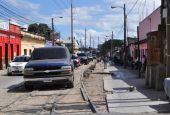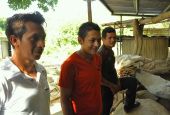J. Malcolm Garcia is a freelance writer and author of The Khaarijee: A Chronicle of Friendship and War in Kabul and What Wars Leave Behind: The Faceless and the Forgotten. He is a recipient of the Studs Terkel Prize for writing about the working classes and the Sigma Delta Chi Award for excellence in journalism.

Awareness fosters hope for often-invisible sex-trafficking victims in the Midwest
Along Midwestern highways and interstates, with their hundreds of truck stops and rest stops, hubs for sex trafficking thrive. Sisters throughout the region are educating people to recognize the signs of victimization and are helping survivors recover.
Outreach in Guatemala City's red-light district: 'We care for you as you are'
Sr. Magdalena Pascual is one of six Oblate Sisters of the Most Holy Redeemer who does outreach work on La Línea, "The Line," Guatemala City's well-known, notorious red-light district. Seven days a week, nearly 24 hours a day, as many as 250 women or more ranging in age from their early 20s to mid-60s work as prostitutes on a barren, two-block stretch of grim row houses where a weed-covered train track divides the bleak street in half.
Children born with HIV find love in sister-run orphanages in Guatemala, Honduras
In the neighboring Central American countries of Guatemala and Honduras, an estimated 3,000 children under the age of 14 are living with HIV. Two orphanages, Hogar Madre Anna Vitiello in Sumpango, Guatemala, and Hogar Casa Corazón de la Misericordia in San Pedro Sula, Honduras, offer shelter, educational support and a sense of belonging to up to 125 children at a time.
Life-threatening mining is the 'only work' available in Honduras mountains
Abraham Núñez avoided dying by just a few steps. "I went in the mine Monday morning and came out later for coffee," Núñez, 36, recalled. "I went back in a half hour later. I heard a hellish noise. I was just going in, and I turned around and ran out." The noise he heard was a landslide that trapped 11 men in a mine in this mountainous area in July 2014. Eight of the miners died. The mine closed, but Núñez went back to work at another mine the next day.
Read also: Legacy of mining operation lingers in Honduras long after closure




